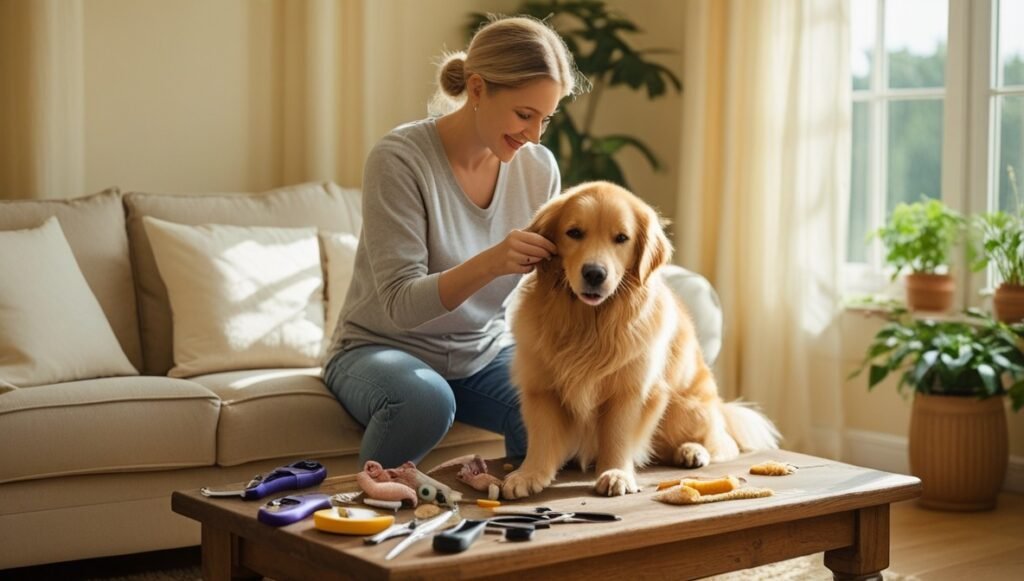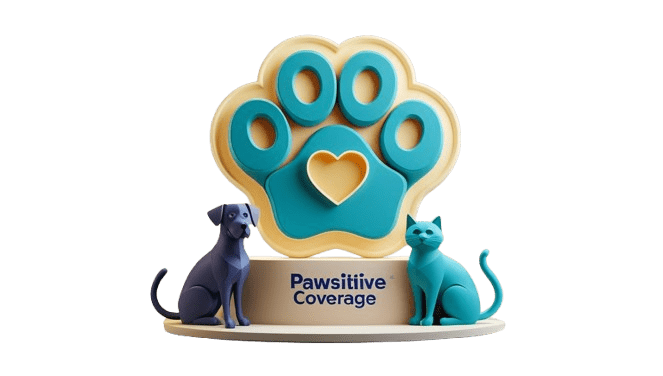I’m Michael Brooks, and if there’s one thing my rescue dog, Luna, has taught me, it’s that pet parenting comes with surprises—some joyful, some pricey. Luna’s squirrel-chasing adventure led to a $3,000 vet bill that shook me to my core. That day, I realized two things: pet insurance is a lifesaver (more on that later), and pet budgeting is non-negotiable. At Pawsitive Coverage, we’re not insurers, but we’re here to guide U.S. pet parents like you through the maze of pet care costs. I’ve learned the hard way that a little planning goes a long way. In this piece, I’ll share pet budgeting tips that blend Luna’s lessons with practical advice, so you can keep your pet happy without breaking the bank.
Why Pet Budgeting Is a Game-Changer
Budgeting for Luna wasn’t on my radar until that vet bill hit. Suddenly, I was scrambling—wishing I’d planned for the unexpected. The truth is, pet care costs can sneak up fast. On average, U.S. dog owners spend $1,200-$2,000 yearly on care, while cat owners average $800-$1,500. That’s without emergencies, which can spike costs by $1,000-$5,000. Pet budgeting isn’t just about saving money—it’s about peace of mind. With a plan, you can handle surprises, like Luna’s, without panic. And while insurance covers big hits (check out our pet insurance guide for tips), budgeting covers the everyday stuff. Let’s dive into how I budget for Luna, so you can do the same.
Understanding Your Pet’s Expenses
I used to think pet costs were just food and vet visits—until Luna’s curiosity led to chewed shoes and a swallowed sock (yep, another vet trip). Here’s what I track now:
- Food: Luna’s premium kibble costs $60/month. Cats often eat less, but quality matters.
- Grooming: $50 every two months for Luna’s spa day. Cats? Less, but don’t skip it.
- Vet Care: Annual checkups ($150), vaccines ($100), and flea meds ($20/month). Emergencies? That’s where insurance shines—plans cost $40-$70/month for dogs, $20-$40 for cats, covering 70-90% of big bills.
- Toys and Treats: Luna’s chew toys ($15/month) keep her from eyeing my furniture.
- Extras: Boarding ($50/day) or pet sitters ($25/visit) for trips.

I learned to list every expense—big or small. It’s like a dog park chat: casual but eye-opening. Not sure where to start? Our pet finances post has a downloadable expense tracker to make it easy.
Creating a Pet Budget That Works
Budgeting for Luna felt daunting at first—like teaching her to sit (spoiler: she’s stubborn). But breaking it down made it manageable. Here’s my step-by-step:
- List Expenses: Write down everything—food, vet, toys, insurance. I use a spreadsheet; you can too.
- Estimate Costs: Research averages. For example, dog food ranges $20-$100/month, depending on size and quality.
- Set Aside for Emergencies: I save $50/month for Luna’s “oops” fund. Experts suggest 5-10% of your pet budget for surprises.
- Track Spending: I log every purchase—apps like Mint help. Luna’s $200 groomer bill last year? Not happening again.
- Adjust as Needed: Pets change—Luna’s senior now, needing joint supplements ($30/month). Budgets should flex.
It’s not rocket science, but it’s a game-changer. Think of it as leash training: a little structure keeps things under control.
Smart Ways to Save on Pet Care
I’m no millionaire, so I’ve mastered saving without skimping. Here’s how:
- Bulk Buy: Luna’s kibble in bulk saves 15%. Same for litter or treats.
- DIY Grooming: I trim Luna’s nails ($10 savings per month). Cats? Brush at home to reduce shedding.
- Preventive Care: Annual checkups catch issues early, avoiding $1,000+ treatments. Luna’s dental cleaning ($300) prevents worse problems.
- Shop Sales: Pet stores run deals—I stock up on toys during holidays.
- Pet Insurance: It’s not a budget replacement but a safety net. Luna’s plan covers 80% of emergencies, saving me thousands. Not insured? Our insurance tips post can help.

These tricks add up. Last year, I cut Luna’s costs by 20%—enough for extra park trips (her favorite).
Avoiding Budget-Busting Mistakes
Luna’s sock-swallowing incident taught me: prevention beats reaction. Common mistakes I’ve made (and fixed):
- Skipping Insurance: I waited too long—Luna’s bill hit hard. Plans cost $40-$70/month for dogs, but they cover up to 90% of emergencies.
- Impulse Buys: Luna doesn’t need five squeaky toys. I set a $20/month treat budget.
- Ignoring Subscriptions: Auto-ship food saves 5-10%, but I forgot to cancel once—oops.
- DIY Overload: I tried homemade food, but it cost more (and Luna snubbed it). Stick to what works.
Budgeting is trial and error—like teaching Luna to fetch (she still thinks it’s a game of keep-away). Learn as you go.
Join Luna’s Budget-Savvy Pack!
Budgeting for Luna isn’t just about numbers—it’s about giving her the best life without stress. What’s your top pet budgeting tip? I’d love to hear! Take our quick quiz to find your budgeting style and email your results to hello@pawsitivecoverage.com or visit our Get in Touch page. We’ll share top tips in our Pet Stories! Questions about costs or insurance? We’re not insurers, but we’re here to guide—reach out within 24-48 hours. Explore more at Pawsitive Coverage, where Luna’s lessons light the way to smart, joyful pet parenting.

